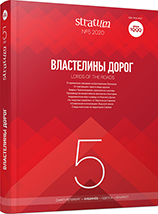Присутствие авар в Трансильвании. Хронология, мотивы, территориальные рамки
The Avar Presence in Transylvania. Chronology. Motivation. Territorial Boundaries
Author(s): Călin CosmaSubject(s): History, Archaeology, Military history, Middle Ages, 6th to 12th Centuries, Migration Studies
Published by: Издательский дом Stratum, Университет «Высшая антропологическая школа»
Keywords: Transylvania; 7th—8th centuries; Avars; Gepids; Slavs; cemeteries; chronology; conquest;salt mining;
Summary/Abstract: The presence of Avar warriors in Transylvania during the 7th—8th centuries is a reality that cannot be contested, as it is proven by the cemeteries and graves that belong, beyond doubt, to warriors of Avar origin.The first Avar incursions in the Transylvanian Plateau took place after 630 and aimed at occupying/conquering the salt-rich areas in the center of Transylvania. This was only possible after they established their direct control over the Gepid communities in the center of the Transylvanian Plateau. I do not believe we can speak of a conquest of Transylvania, but rather of an act of taking control over a territory that the Avars were interested in due to its salt resources. They did not decimate the Gepid communities, but lived alongside them and used them to extract salt.According to the archaeological data that can be attributed with certainty to the Avar warriors (cemeteries and graves), one can note the fact that the incursion of the Avars in the Transylvanian Plateau was not a large-scale phenomenon and the territory they actually dominated was much smaller than some specialistshave estimated. This territory was restricted to the area between Câmpia Turzii and Teiuș, where the Mureș turns south, on both sides of the river. Current data do not allow one to form a general picture of the way in which the Avar domination in Transylvania ended. The history of the central province of Romania during the first half of the ninth century still holds many uncertainties that only future archaeological researches might decipher.
Journal: Stratum plus. Археология и культурная антропология
- Issue Year: 2020
- Issue No: 5
- Page Range: 261-276
- Page Count: 16
- Language: Russian
- Content File-PDF

